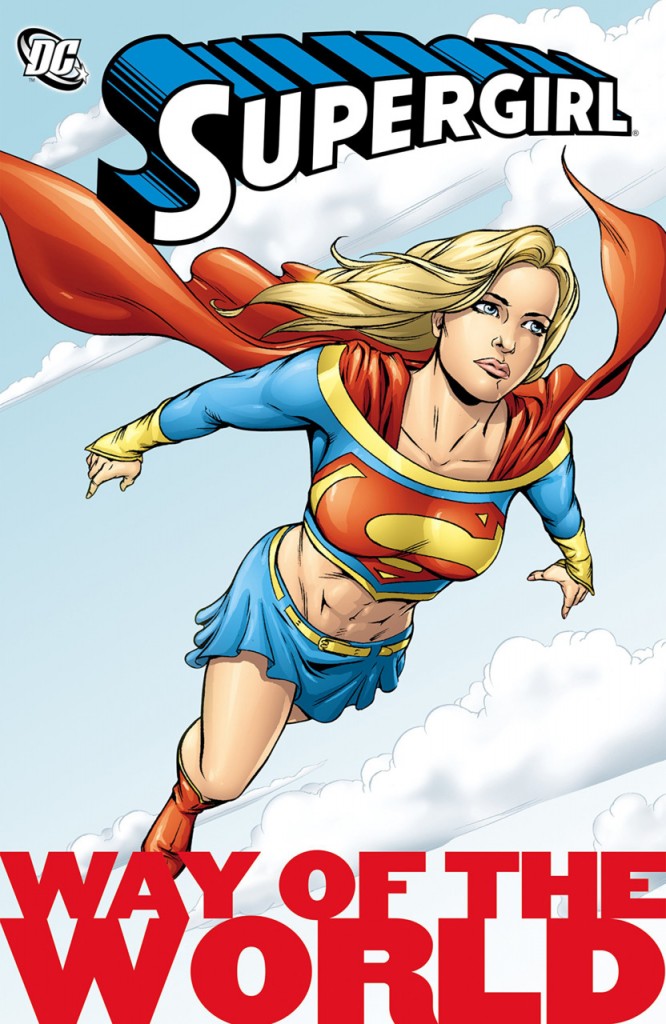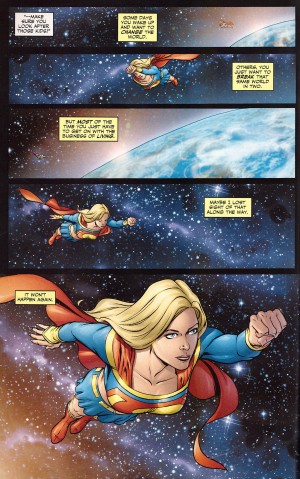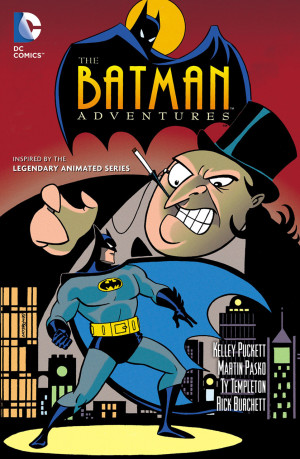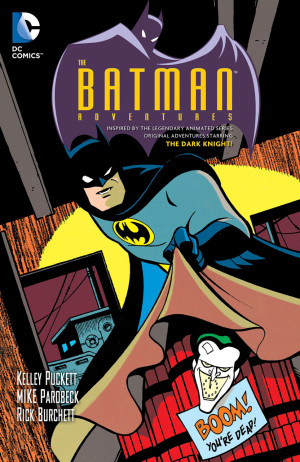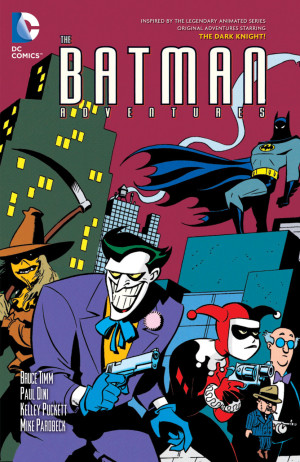Review by Karl Verhoven
The Supergirl series begun in 2005 didn’t seem to be able to keep a writer in place, and this time it’s Kelley Puckett who supplies the single tale occupying most of a graphic novel.
Puckett’s story opens with Supergirl having promised a dying child that she’ll cure cancer. The intrusion of a real world disease affecting the young to the old is an emotive topic needing considerable sensitivity to avoid being exploitative, and Puckett manages that. The child is almost incidental to what’s a very good story over four chapters that switches direction and theme several times in service of Supergirl’s assorted methods of adhering to her promise. A sardonic and downbeat take on the then little seen Resurrection Man brightens the first part: “I’m going to be as diplomatic as I can. I’m fifty thousand years old, and that’s got to be the stupidest plan I’ve ever heard”. Wonder Woman and Superman also feature, there are some novel surprises, and it concludes with a simple, but thoughtful piece of self-realisation.
Cover artist Drew Johnson’s art defines the story, and Ron Randall (sample page) for the conclusion maintains roughly the same clean and attractive style, but it’s apparent from the midway point of his second chapter that Johnson’s art is rushed. Brad Walker’s third chapter looks out of place in comparison. Walker’s good, his style having hints of early 20th illustrators and Gary Frank, but there’s a stiffness also, although of all the artists here, he’s the one who most minimises Supergirl’s ridiculous objectifying sports bra costume.
Way of the World features a bizarre and illogical affliction, one ridiculously common to graphic novels collecting monthly superhero comics. The content indicates that Johnson fell prey to a downside of monthly publication, missing his deadline, necessitating a fill-in issue. Why do the editors of collected editions (uncredited here) then compound this disappointment by an adherence to publication order, again interrupting the multi-part tale for the fill-in? There’s nothing wrong with Will Pfeifer and Ron Randall’s tale of Supergirl experiencing longings for Krypton, and hoping against hope for a message from the past. Indeed, the desire for the impossible ties in thematically with the remainder of the book, but any remotely sympathetic editor would have prioritised content rather than chronological imperative and placed the story after Puckett’s.
James Peaty and Randall supply the concluding tale. Surely the most awkward element of writing an all-powerful character like Supergirl is providing a credible method of containing her for dramatic purposes, and Peaty manages this. His contribution also ties into the theme of the remaining material, and the daft circumstances affecting Young Justice member Empress are presumably not his doing, but this doesn’t quite have the pull of what it follows.
The placement of the fill-in is a side-issue, and overall this is a readable selection of Supergirl stories. She’s presented as uncertain and naive in adjusting to a new world, and the plots surprise. After this perpetual holding pattern Sterling Gates took over for the long haul with Who is Superwoman?
